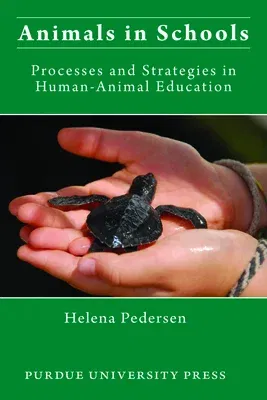Helena Pederson
(Author)Animals in Schools: Processes and Strategies in Human-Animal EducationPaperback, 15 December 2009

Qty
1
Turbo
Ships in 2 - 3 days
In Stock
Free Delivery
Cash on Delivery
15 Days
Free Returns
Secure Checkout
Part of Series
New Directions in the Human-Animal Bond
Print Length
146 pages
Language
English
Publisher
Purdue University Press
Date Published
15 Dec 2009
ISBN-10
155753523X
ISBN-13
9781557535238
Description
Product Details
Author:
Book Format:
Paperback
Country of Origin:
US
Date Published:
15 December 2009
Dimensions:
22.61 x
14.99 x
1.02 cm
ISBN-10:
155753523X
ISBN-13:
9781557535238
Language:
English
Location:
West Lafayette, IN
Pages:
146
Publisher:
Weight:
249.48 gm

